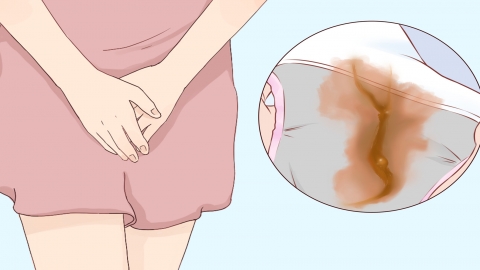What does it mean if there are brownish discharges on my underwear that don't look like blood, and what should I do?
Brownish discharge on underwear that doesn't look like typical blood may be caused by minor bleeding during ovulation, residual menstrual blood before or after menstruation, vaginitis, cervicitis, endometritis, and other conditions. This can be improved through observation and care, lifestyle adjustments, or medication. If the discharge persists or increases, or is accompanied by odor or abdominal pain, prompt medical attention is necessary.
1. Minor bleeding during ovulation: During ovulation, a temporary drop in estrogen levels can cause slight shedding of the uterine lining. The blood turns brown after oxidation and usually appears in small amounts lasting 2–3 days. It's recommended to maintain external genital hygiene and avoid strenuous exercise. No special treatment is required—just monitor symptom changes.
2. Residual menstrual blood before or after menstruation: Small amounts of menstrual blood remaining in the uterus may be expelled just before or after a period, appearing as brownish discharge due to oxidation. There is typically no significant discomfort. It's advised to keep the abdomen warm, avoid raw or cold foods, and maintain regular sleep patterns to help fully expel menstrual blood.

3. Vaginitis: Imbalance of vaginal flora or infections caused by bacteria, fungi, etc., can lead to inflammation, irritating the mucosa and causing minor bleeding. The discharge appears brownish and is often accompanied by itching and an unpleasant odor. It's recommended to use medications such as metronidazole suppositories, clotrimazole suppositories, or gynecological cleansing solutions under medical guidance to relieve symptoms.
4. Cervicitis: Inflammation of the cervix caused by pathogenic infection leads to congestion and fragility of cervical mucosa, resulting in minor bleeding. Brownish discharge may worsen after intercourse and may be accompanied by lower back discomfort. Patients may use medications such as Baofukang suppositories, cefixime dispersible tablets, or levofloxacin hydrochloride capsules under a doctor’s supervision to alleviate symptoms.
5. Endometritis: Bacterial infection causes inflammation of the endometrium, leading to slight shedding and bleeding of the uterine lining. The brownish discharge lasts longer and is often accompanied by dull lower abdominal pain and a sensation of heaviness. Patients may take metronidazole tablets, cefuroxime axetil tablets, or Gynecological Qianjin tablets as directed by a physician to improve symptoms.
Maintain clean and dry external genitalia, change cotton underwear frequently, avoid unhygienic sexual practices, eat light and easily digestible food, and engage in moderate, gentle exercise to enhance immunity and support recovery.







